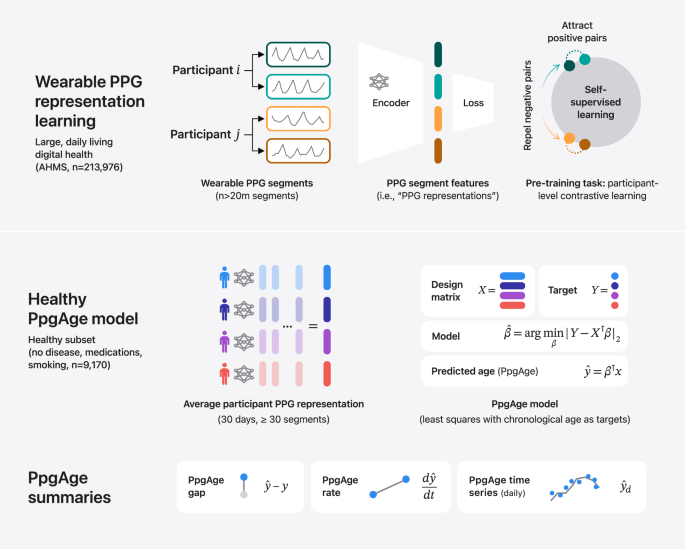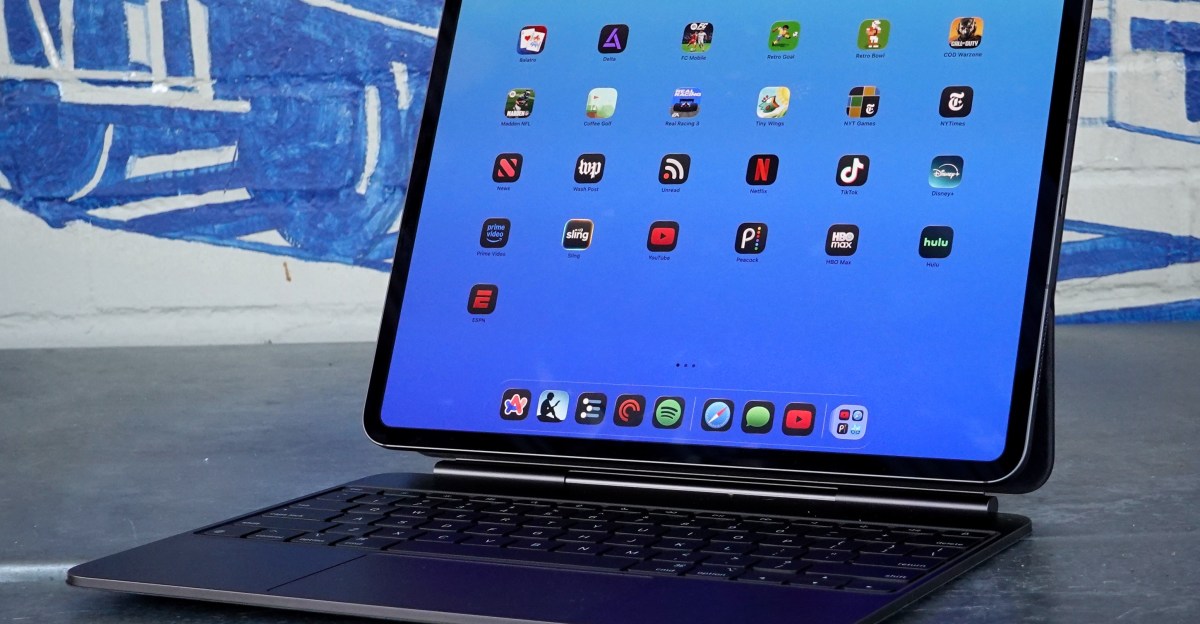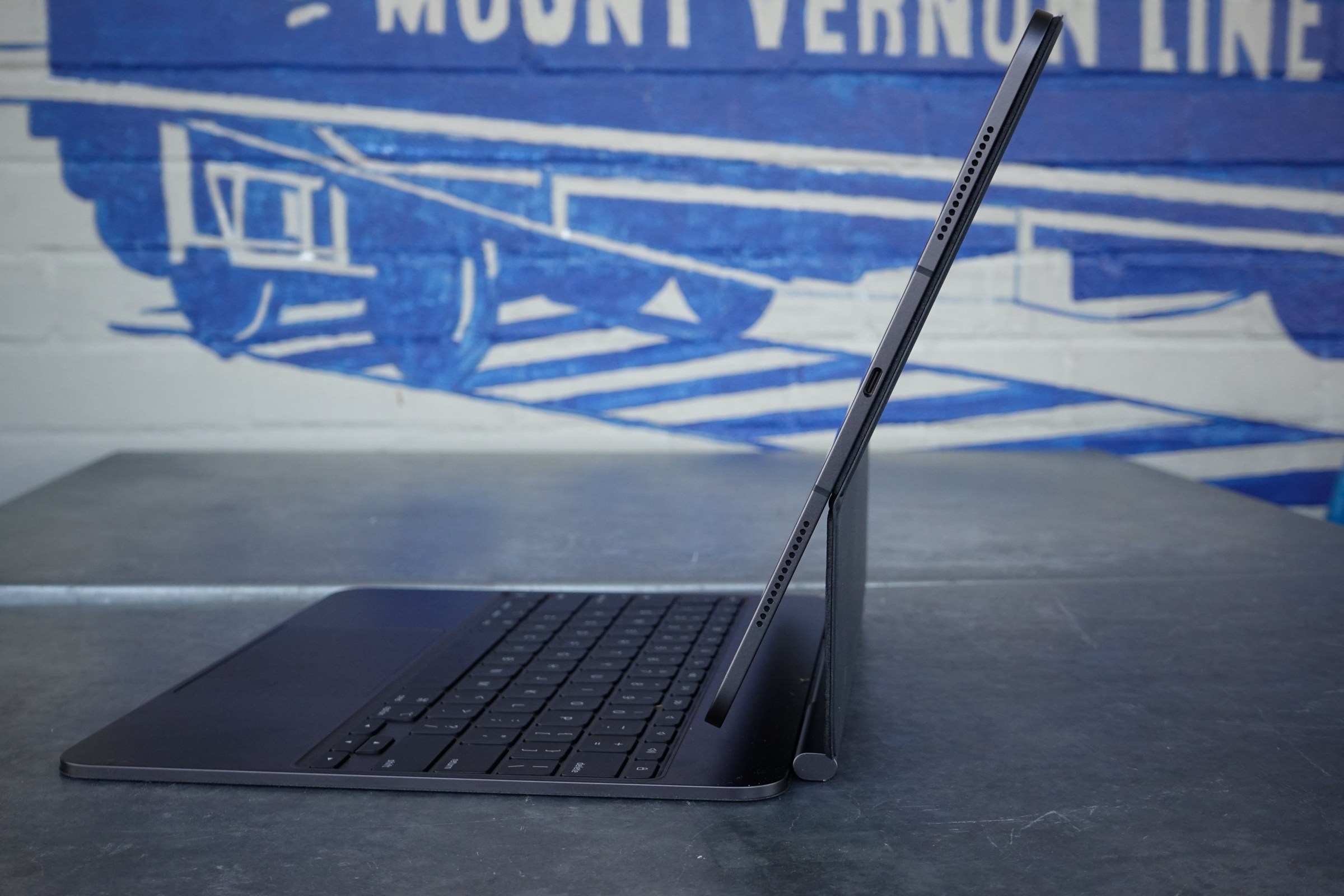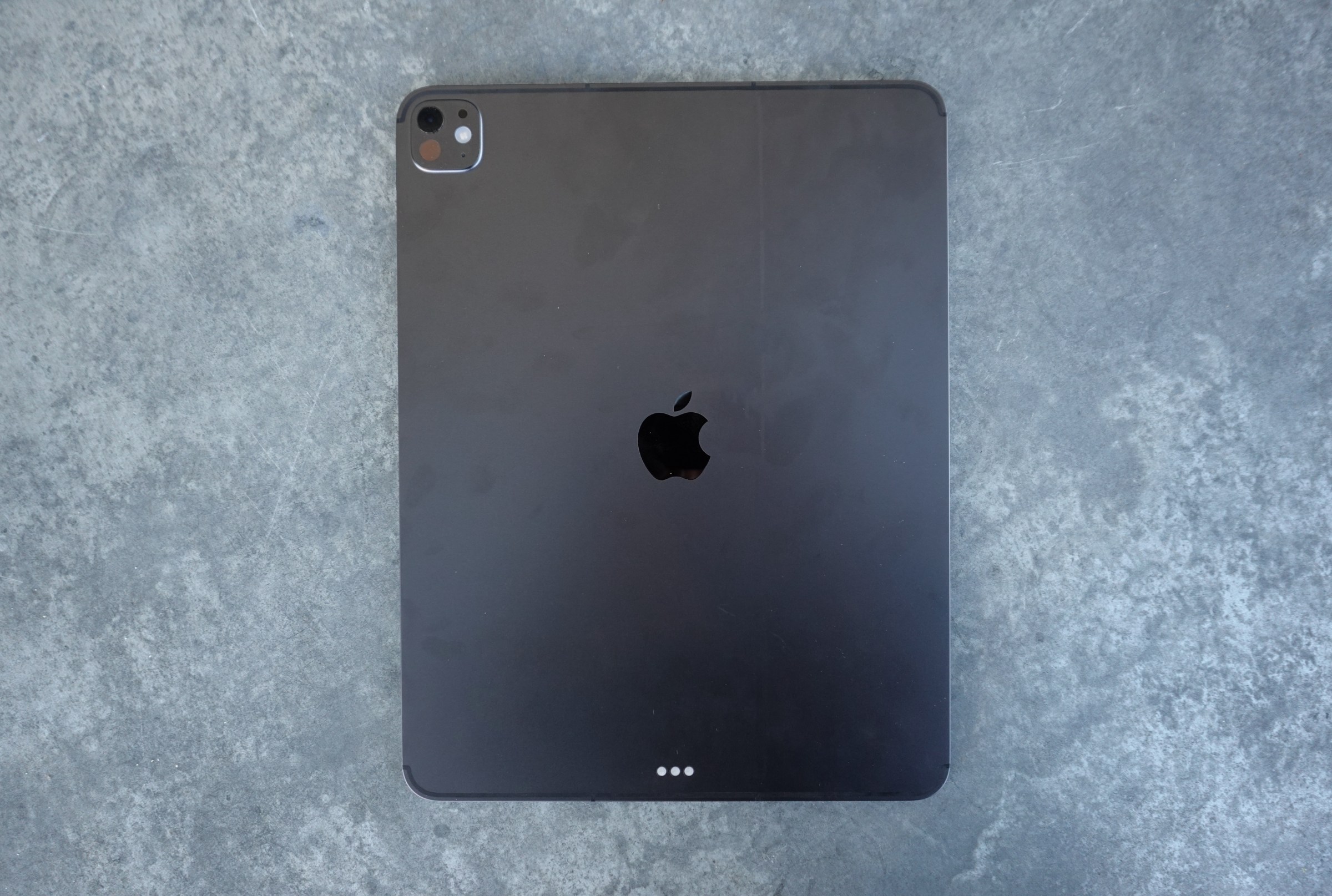What do you get the tablet that has everything? Last year, Apple debuted a massive overhaul to the iPad Pro, with a thin new design, a gorgeous new screen, a bunch of updated accessories, and a speedy new chip. I called it the best iPad ever. I also wondered how it could even get much better.
The answer, at least this year, is apparently it couldn’t. The new iPad Pro is, in every way that matters, the exact same thing as last year’s Pro. It still comes in 11- and 13-inch models, which start at $999 and $1,299, respectively. It still comes in two colors. It’s still gorgeous. Okay, fine, there is one discernible difference: It doesn’t say “iPad Pro” or have a line of fine print on the back. Apple took one step off the assembly line. Tell your grandkids.
Inside, there’s more change to similar effect. The latest Pro has a new chip, the M5, and Apple swapped in its own networking chips — the C1X for cellular connection and the N1 for Wi-Fi, Bluetooth, and (theoretically) Threads. As you’d expect, everything’s a little faster, and as you’d expect, none of it makes any practical difference in your day-to-day use of the iPad.
And yet, after spending the better part of a week using a 13-inch iPad Pro, I’m more compelled by it than I expected to be. The biggest reason by far is not the new hardware but iPadOS 26, which finally imbues the iPad with some PC-like powers, from the free-form multitasking to the menu bar to the massively improved Files app. There are still a lot of things that are easy on the Mac and hamfistedly complicated on the iPad, and Liquid Glass remains a mistake, but Apple has clearly decided that iPads should just be more like Macs.
You can get iPadOS 26 on lots of iPads, including last year’s Pro. The M5 Pro is the best but also the most expensive, as the Pro always is: I don’t know why you’d get this device unless you’re also getting an Apple Pencil or a Magic Keyboard or both, and at that point this is at least a $1,500 expense. If you need a computer, I’d still recommend a Mac to most people. But if you want an iPad, and you want the best iPad, there’s no other choice.
For nearly everything you need to know about the iPad Pro, you should read my review from last year. Only a few things have changed. The first, of course, is the M5 chip. In benchmark tests, it scores about 11 percent higher than the M4 on standard CPU tasks and a full 34 percent higher on GPU tasks. That’s a big number, and it bears out: The M4 Pro was a zippy machine for playing games, exporting video, and editing photos, but the M5 Pro is even a beat faster and a little sharper. (Did I win my first round of Fortnite on the M5 Pro just because the graphics were so good? Who can say?) It doesn’t get hot and it doesn’t seem to throttle under duress. It’s just a terrific processor.
If you’re coming from, say, an M1-powered iPad Pro, you’ll notice the performance improvement right away. Things that used to load and buffer now just render and save almost instantly. The leap from the M4, though, will only really appear if you’re moving huge amounts of video or 3D renderings through the machine. For all but the most aggressive, creative-professional workflows, the M4 was and is more than enough processor.
When Apple started to move to its own networking chips rather than buying them from companies like Broadcom, the overarching question was not whether they’d be better but whether they could even be as good. Rest easy: they are. In fact, my internet speeds are consistently faster on the M5 Pro than the M4 Pro. Sometimes way faster. There are lots of possible reasons for internet speeds to fluctuate, so I don’t want to get too excited about Apple’s work here, but I can say confidently that you don’t need to worry about the chip switch.
The new charger might be the coolest thing in iPad-land this year
There’s a new charger in the box with the new Pro, which might actually be the coolest new thing in iPad-land this year. It’s a small, light 40-watt charger that can, for short periods of time, ramp its output up to 60 watts in order to charge your device much more quickly. My tests matched Apple’s exactly: I put the M5 Pro on the charger dead, and exactly 30 minutes later it was at 50 percent. I did the same with the M4 Pro, and it was at 33 percent after half an hour. Good stuff in either case! This charger’s going everywhere with me from now on.
That’s it. That’s every new thing about the M5 iPad Pro. It’s faster! Somewhere between a little faster and a lot faster, depending on which iPad you’re upgrading from. Apple wants you to think that every bit of performance gain matters, because AI workflows are becoming ubiquitous and Foundation Models are part of everything you do. Whether you think slightly faster AI image generation is a killer app is between you and your god, but so far, Image Playground isn’t tempting me to upgrade. This is a chip bump through and through.
This is a chip bump through and through
If you’re shopping for an iPad Pro, I’d tell most people to see if you can get a good deal on an M4 Pro, which remains plenty good and plenty powerful for almost everything. But if you are on the absolute bleeding edge of the iPad, I struggle to find a reason you won’t love the M5 Pro. It’s the best, even better.
I worried with last year’s model that the iPad Pro was almost too good a piece of hardware, given how limited iPadOS continued to be. Those shackles aren’t all the way off with iPadOS 26, but they’re getting there. The M5 Pro now feels a lot like a super-fast laptop that never seems to slow down, even when I have 10 overlapping apps open just because I can. It’s more intuitive to navigate, especially with a trackpad and keyboard. You can find things in Files now! We’re still a lot of desktop-class apps away from a full “what is a computer” crisis, but iPadOS 26 makes clear that Apple thinks of the iPad as more or less just a laptop. And the M5 Pro is one of the best and best-looking laptops I’ve ever used.
First Appeared on
Source link
















